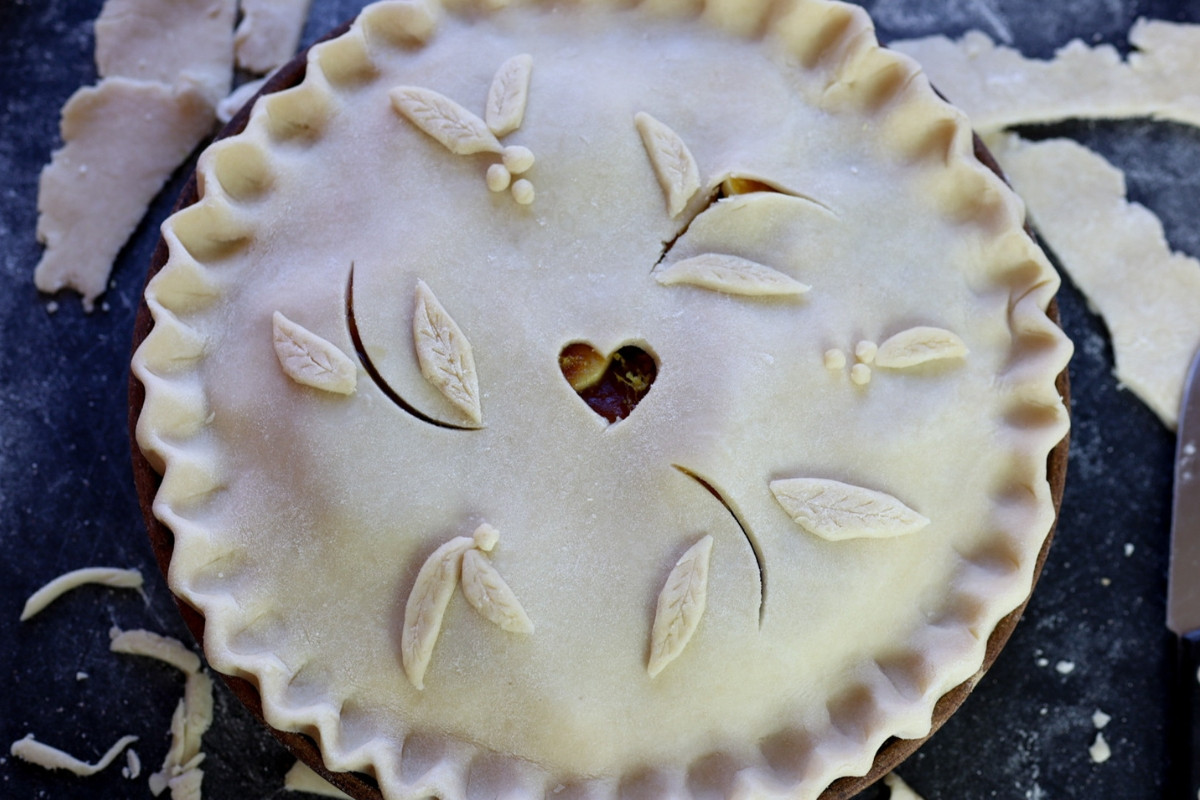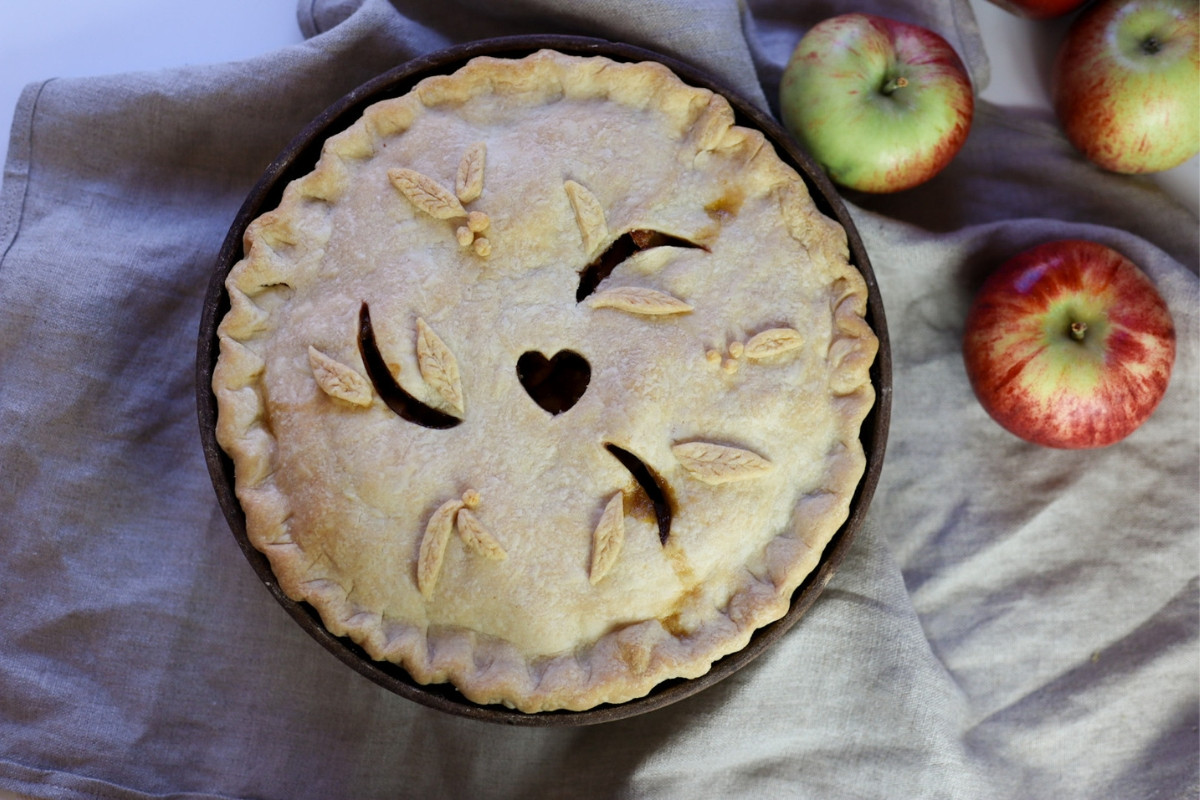Family Pies are more than just desserts; they are edible embodiments of warmth, tradition, and togetherness. Whether it’s the joyous occasion of Thanksgiving, a cozy Sunday supper, or simply a craving for comfort, a homemade pie brings smiles to faces of all ages. And at the heart of every memorable family pie lies a truly exceptional crust. This all-butter pie crust recipe, originating from Sarah Hale’s revered 1873 cookbook, is your key to creating tender, flaky, and utterly delicious pies that will become cherished family favorites for generations to come.
 an unbaked apple pie from an 1800
an unbaked apple pie from an 1800
An unbaked apple pie, showcasing the potential for delicious family desserts with a homemade crust.
This isn’t just any pie crust; it’s a time-tested recipe passed down through generations, perfect for both sweet family pies bursting with fruit and savory pies filled with hearty ingredients. Imagine the aroma of freshly baked apple pie wafting through your home, or the satisfying crunch of a savory meat pie shared amongst loved ones. This recipe makes it all possible, and surprisingly easy.
FAMILY PIE PASTE
Rub half a pound of butter into a pound of flour, and add water enough to knead it thoroughly. Another common proportion is half a pound of butter to a pound and a half of flour.
Mrs. Hale’s New Cook Book, 1873
This straightforward recipe, straight from Mrs. Hale’s New Cook Book, is the foundation for countless family pie memories. Let’s delve into how to bring this classic recipe to life in your own kitchen, ensuring every family pie you bake is a resounding success.
Mastering the Classic Crust for Unforgettable Family Pies
Many home bakers might feel intimidated by the prospect of making an all-butter pie crust. There’s a common misconception that it’s difficult to handle and roll out. However, this recipe is designed for ease and reliability, making it ideal for even novice bakers looking to impress their family with homemade pies. It’s become a go-to for everyday baking because of its simplicity and consistent results, whether you’re creating a sweet treat or a savory centerpiece for your family table.
Perfectly formed pie crust dough, ready to be rolled out for family pies.
Choosing Butter for Your Family’s Pie Crust: Salted or Unsalted?
The choice between salted and unsalted butter often comes down to personal preference and the type of family pie you’re making. For sweet pies, like classic apple, cherry, or pumpkin, unsalted butter is generally recommended. It allows you to control the overall salt level and lets the sweetness of the filling shine. However, for savory family pies such as quiche, chicken pot pie, or a hearty meat pie, salted butter can enhance the savory flavors and add a pleasant depth to the crust.
When in doubt, unsalted butter is a safe and versatile choice. You can always add a pinch of salt to the dough if needed, ensuring the perfect balance for your family’s taste. The key is to use high-quality butter, as it significantly impacts the flavor and texture of your family pie crust.
Achieving the Ideal Dough Consistency for Family Baking Success
Getting the right amount of water is crucial for a perfect pie crust dough. Using the ratio of ½ pound of butter to 1 pound of flour, you’ll typically need between 9 to 11 tablespoons of water. This can vary depending on factors like the flour brand, butter temperature, and even humidity. Start with 8 tablespoons of cold water and gradually add more, one tablespoon at a time, until the dough reaches the desired consistency.
The ideal pie crust dough should feel like fresh play dough – soft, pliable, and easy to work with, not sticky or dry. This consistency ensures that your dough will roll out smoothly and bake into a tender, flaky crust that your family will adore.
Making Enough Pie Crust for the Whole Family
This recipe is generously portioned, perfect for family baking. You can expect it to yield enough dough for two single-crust pies, ideal for fruit pies or tarts. Alternatively, it provides enough for one double-crust pie, perfect for classic apple pie or savory meat pies that require a top and bottom crust to hold in all the delicious filling.
If you are using shallower, traditional pie plates, you might even be able to get three bottom crusts from a single batch. This makes it economical and efficient for baking multiple family pies, especially during holidays or gatherings.
 an apple pie from an 1800
an apple pie from an 1800
A beautifully baked apple pie, ready to be shared with family and friends.
Tips to Prevent Over-Browning and Ensure Perfect Family Pie Presentation
All-butter pie crusts, while incredibly flavorful and flaky, can brown more quickly than crusts made with shortening. This is especially true for decorative crusts with intricate details. To prevent over-browning, particularly on delicate edges, you have a couple of options.
Firstly, keep a close eye on your pie during the last part of baking. If the crust starts to brown too quickly, you can use pie shields or strips of aluminum foil to protect the edges. Secondly, for highly ornamented family pies, consider a slight variation to this recipe by substituting half of the butter with lard or suet. Using ¼ pound butter and ¼ pound lard to one pound of flour creates a slightly flakier crust that can withstand higher heat for longer without browning as deeply. This is a fantastic tip for ensuring your family pie masterpieces look as good as they taste.
Baking family pies is a wonderful way to create lasting memories and delicious traditions. With this classic all-butter pie crust recipe and these helpful tips, you’re well-equipped to bake pies that will be the heart of your family gatherings for years to come. Enjoy the process, share the joy, and savor every slice of homemade goodness!
